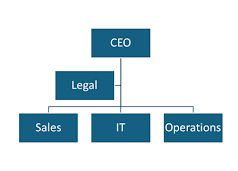A "Cost-Benefit Analysis" Approach Brought Europe's Busiest Airport To A Hault. Is Your Cybersecurity Built On "Cost-Benefit Analysis"?

(image taken from https://www.express.co.uk/news/uk/1543817/Heathrow-emergency-Flight-diverted-British-Airways-plane-Dubai-London-police-latest-upda ) Oopsie! The "cost-benefit analysis" mindset strikes again. On 21 March 2025, a power station in Hyde North, which serves Heathrow Airport, failed. This failure caused the airport to cease operations until back-up systems could be manually checked and brought online. This process took about 18 hours. Many kudos are due the engineers and first responders who accomplished this task. As The New York Times put it a few days later: "A gleaming new data center sits less than half a mile from the electric substation where a fire plunged Heathrow Airport into darkness last week. The data center’s own power was also cut that day. But no one who relied on it would have noticed, thanks to a bank of batteries and backup generators designed to kick in instantly. Meanwhile it took officials at Europe’s busiest airport close to 18 hou...





.jpg)




